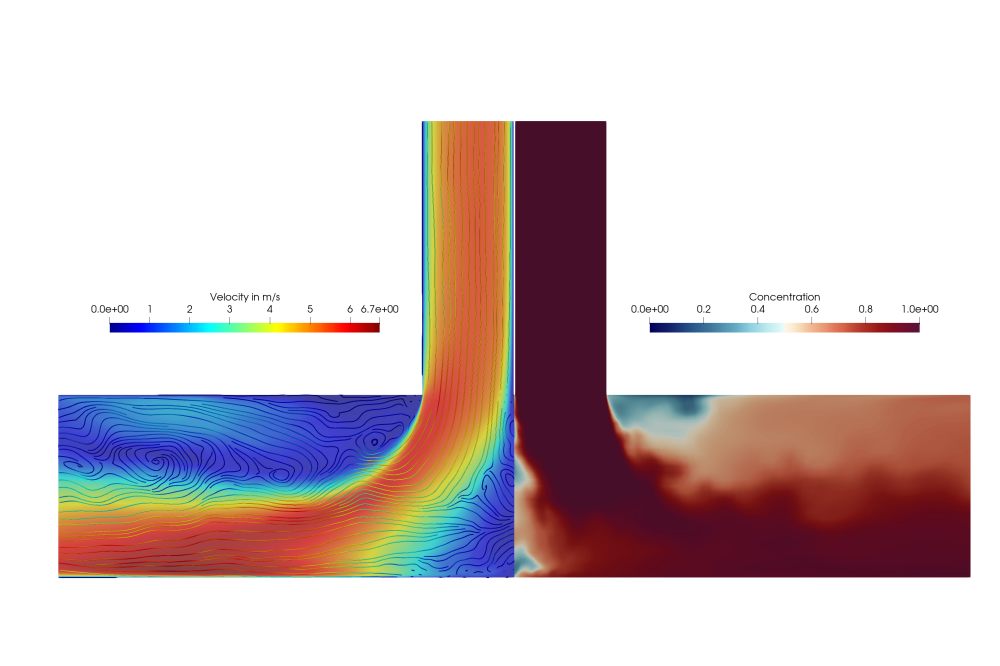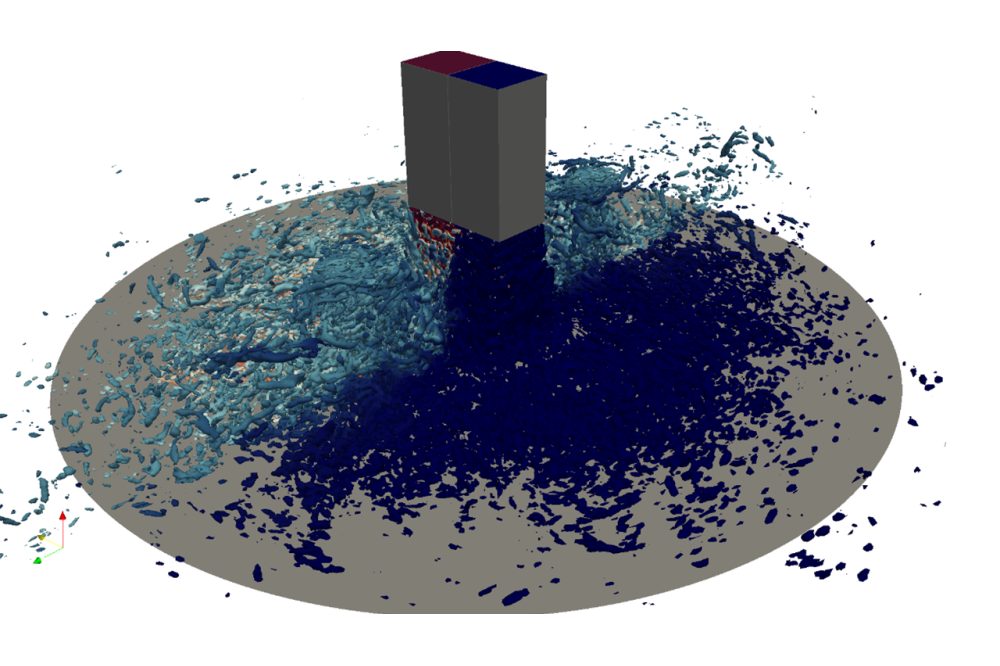Numerical Simulation of Species Transport within a Double-Square Impinging Jet Configuration
Introduction
Combustion engines are a common means to power various types of machinery. Despite the declining role of technical combustion due to electric alternatives, it continues to play a significant role in modern industries. The utilization of Computational Fluid Dynamics (CFD) in the development of modern combustion engines is a prevalent approach. Reynolds-Averaged Navier-Stokes (RANS) methods offer the capability to simulate mean values within a short timeframe. However, a major challenge of these methods lies in their modeling, which is not applicable for strongly curved, pressure-driven processes. As part of the CRC/TRR150 project funded by the DFG, this study aims to look deeper into the performance of underlying models, with the goal to establish a framework for simulating such complex flow fields. For this purpose, several models were compared, including the Reynolds Stress Model (RSM), a Large Eddy Simulation (LES) with a Wall-Adaptive Local Eddy Viscosity (WALE) Model, and the Improved Instability-Sensitive Reynolds-Averaged Navier-Stokes Model (IISRSM), capable of detecting coherent vortex structures. Through multiple simulations on the HPC Lichtenberg Cluster, a dataset was obtained and validated against reference datasets from Direct Numerical Simulations (DNS) and experiments conducted by different groups of the CRC/TRR150.
Methods
Utilizing a finite volume approach (FVM) implemented in the OpenFOAM software toolbox, three distinct categories were formed, each corresponding to one of the previous mentioned models. For two different flow geometries, different mesh configurations, refinements, and solver settings were computed. The main geometry consists of two parallel-running rectangular ducts, each transporting distinguishable gases. Both ducts terminate at the same height, followed by a free stream area in which the gases can mix prior to impinging on a perpendicular wall. Between the ends of the ducts and the impinging plate flow and gas mixture properties could be measured. The second geometry is nearly the same as the first but the depth direction is now a symmetric axis so that the ducts will be slots and the flow behavior changes.
Results
The RANS approach allows for two major model categories. The eddy viscosity hypothesis, forming the basis of the first category, lacks sufficient resolution of the physical flow properties to accurately replicate the given behavior. Hence, the second category, based on the Reynolds stress-based models, must be used. While these models incorporate a transport equation for the stresses, allowing for more complex modeling by resolving more parts of the equation, they still fall short in reproducing this flows behavior. Although the flow velocity deviation is small and therefore acceptable, Reynolds stresses are significantly mismatched. With their huge impact on mixing processes, simulations relying on RSM models are not able to correctly represent mixture processes. A shift to the LES approach yields a better agreement with reference data, what corresponds to the expectations, but the data is computed at the expense of increased computational resources and time. The IISRSM model, a hybrid approach, lies between the two. While slightly inferior to the LES accuracy in terms of solution quality, it requires around one-fifth of the cells, resulting in reduced resource usage and computation time. The study shows that the IISRSM approach presents a promising framework, offering high accuracy within a short time span.
Discussion
Despite lots of simulations conducted, there are still some points to improve. One of them is the quality of the reference data. While the simulations show a good conformity with the experimental data, there are necessary variations between the test bench and the digital model of the geometry. Therefore, the DNS, which is also based on a model of the geometry, should allow for a better match of the data. Unfortunately, the team of the DNS encountered a problem with the high complexity of the flow physic, which yields to highly unstable flows. The instabilities of the flow require an extremely precise resolution which prevents them from computing fully converged and averaged solutions in the timeframe of this project. The complex physic is the reason for the second geometry which has less flow phenomena that require a high resolution. For future projects there is the model derived from the test bench, which allows a comparison with the experimental data, and a model that is reduced by one physical dimension. This model is symmetric in one axis and is based on a slot. This leads to a changed flow field which differs from the original geometry but allows for numerical models with a smaller computation time for the DNS and the simulations made in this project. The time constraint of this project also posed a challenge. The IISRSM model offers a good estimate of bended, pressure driven flow fields but the set of geometries considered should be expanded and a comparison of more meshes in future project could lead to an improved understanding of the model behavior which will yield a better model performance.





